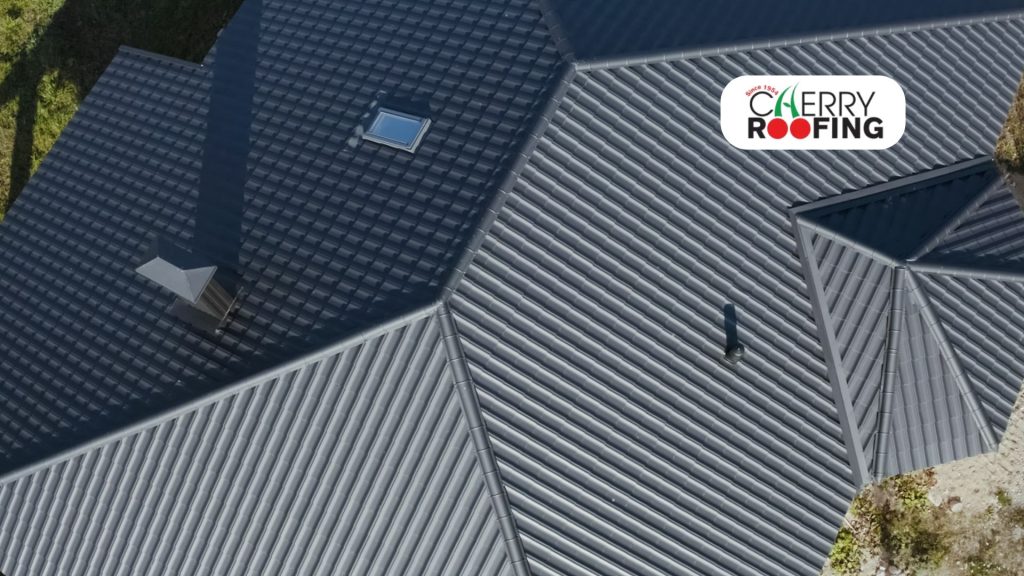Find out here how to find a leak in a metal roof in South Florida.
Finding a leak in a metal roof might seem daunting, but with the right approach, you can tackle the issue effectively.
In this article, we will discuss a step-by-step approach to locating and addressing leaks, and also guide you on when it’s best to call in professional help. So read until the end to catch all the important details and tips.

Understanding Metal Roof Leaks
Before diving into the leak-hunting process, it’s important to understand why metal roofs might leak in the first place. Common causes include:
- Corrosion: Despite their resistance, metal roofs can corrode especially in the salty air of South Florida.
- Improper Installation: Poorly installed panels, flashing, or seams can create vulnerabilities.
- Aging: Over time, the natural expansion and contraction of metal can cause sealants to deteriorate.
- Damage: Heavy winds, falling debris, or even foot traffic can lead to punctures or loose panels.
Preparing for the Search
When it comes to finding a leak, safety is paramount. Make sure to:
- Use Safety Gear: Wear rubber-soled shoes, a safety harness, and gloves.
- Choose the Right Time: Inspect during dry weather to avoid slipping.
- Get the Right Tools: Have a flashlight, ladder, garden hose, and a friend to assist.
Steps on How to Find a Leak in a Metal Roof
1. Inspect from Inside the House
Start your search indoors. Check your attic or the top floor for signs of water damage. Look for:
- Water Stains: Discolored patches on ceilings or walls.
- Mold or Mildew: Dark spots indicating moisture presence.
- Drips or Dampness: Any obvious signs of water.
Mark these spots to get a sense of the leak’s location.
2. Examine the Roof Surface
Head outside and climb onto your roof. Here’s what to look for:
- Panel Joints and Seams: Check for gaps, misalignments, or visible wear in the seams.
- Flashing: Inspect the areas around chimneys, vents, and skylights. Flashing should be intact and securely fastened.
- Fasteners: Loose, missing, or rusted screws and nails can create leaks.
- Surface Damage: Look for dents, punctures, or any other visible damage.
3. Use Water to Simulate Rain
If you can’t find the leak through a visual inspection, simulate a rainstorm:
- Start Low: Have a friend use a garden hose to spray water on the roof, starting from the lowest part and working upwards.
- Move Slowly: Spray each section for several minutes while you check inside for any signs of water penetration.
- Check Problem Areas: Pay special attention to joints, seams, and flashing as these are common leak points.
4. Investigate Potential Causes
Once you locate the leak, understand the cause to decide on the best fix:
- Sealant Issues: If the leak is at a joint or seam, the sealant may have degraded. Reapply high-quality metal roof sealant.
- Loose Fasteners: Tighten or replace any loose or missing screws. Use neoprene washers to ensure a waterproof seal.
- Damaged Panels: If panels are punctured or corroded, you might need to replace them entirely.
When to Call a Professional
While minor leaks can often be fixed if you’re handy, more extensive damage or hard-to-find leaks might require professional help. South Florida is home to many experienced metal roofing contractors. They know how to find a leak in a metal roof expertly, and what to do to address them. So hiring then ensures the job is done correctly and can save you from further headaches.
Schedule a Metal Roof Inspection with Cherry Roofing, Today!
It can be challenging how to find a leak in a metal roof, but with Cherry Roofing, you don’t have to worry. Whether it’s a minor leak or a more extensive issue, our experts can identify and fix the problem in no time. Just contact us today to schedule your metal roof inspection!